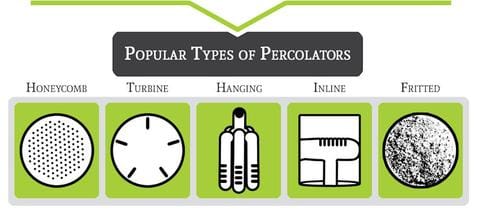What is a Bong
Brief History of the Water Bong
A Bong is commonly defined as a device, generally used for smoking cannabis, tobacco, or a myriad of other herbal substances, which uses water and/or ice as a filtration system. Some suggest that the word “Bong” is said to have derived from a Thai word, “Baung” which means a cylindrical, wooden water pipe. Others say the word may have come from an early water pipe discovery in Africa with the Bong’om tribe. Historically, it is generally accepted that the bong was first brought to the United States by US soldiers stationed overseas in the 1960’s. Since then, artisan glass blowers have made bongs into their own art form.

How a Bong Works
The basic concept of the bong is to cool the smoke being inhaled by passing it through one or several chambers filled with water or ice. The more contact the smoke has with the water, the cooler and smoother the smoke. Although these devices vary in size, shape, and complexity… the one thing they all have in common is delivering a pleasantly refreshing smoking experience.
A bong consists of 5 pieces:
- Tube and/or base – the long, straight tube is essentially what defines a bong. These can vary in sizes from 8” on up. The base is filled with a small amount of water.
- Downstem – a tube that slides into the side of the of the bong and into the water. These may also be slotted at the base to create more bubbles.
- “Carb” or carburetor (generally a pull or a slide) – a hole in the side of the base to create clean air flow and clear the tube. (Most times, this means simply lifting the bowl off of the downstem.)
- Bowl – placed at the opposite end of the downstem, this is where the herb is packed.
- Percolator – a filter that creates bubbles in the water when smoke is drawn through the tube.
Many bongs today come with an ice pinch in the tube. These “pinches” in the glass, usually located at a mid-point or near the top of the tube, prevent the ice cubes from falling into the water (at least until they melt small enough to fall through). This additional filter of ice provides another cooling level before reaching the smoker’s mouth.

Why Use a Bong? The Benefits of Percolation
There is no denying the distinctive sound of a bubbling bong, but there is science behind that beloved gurgle. Although the level of filtration acquired is debatable, studies are promising that passing smoke through water helps to filter some of the toxicants that may be inhaled while smoking. With other smaller devices, such pipes, cigarettes, or joints, the smoke is not filtered which allows small particles, toxicants, even burning embers to pass into the smoker’s mouth, esophagus, and lungs, potentially causing damage over time. Using a water pipe, as the smoker inhales, the smoke travels through the water trapping particulate matter, as well as, commingling with clean air and water vapor, which essentially expands the smoke. As more bubbles are created, the more the smoke expands, and the smoother and cooler the hit.
With this in mind, there are many different types of percolation filters found in bongs today which are engineered to provide better air flow and produce a better smoking experience. These are but a few of the most popular types of percolators:
- Honeycomb – just like the name suggests, this filters the smoke and water through dozens of tiny holes.
- Turbine – pulls smoke through 5-6 slots creating a cyclone effect in the water.
- Hanging – a series of smaller tubes, hang in the center of the main tube to create more bubbles.
- Inline – a small horizontal slotted tube near the bottom of the base
- Fritted – finely porous glass filter, almost looks like fibers, creates the smallest bubbles, which creates the most filtration, but can also clog the easiest.

Other Pieces and Parts of a Water Bong
In addition to the percolator, the other parts play an important factor as well. The down stem, example, has three common styles:
- Classic Down stem – a simple glass tube with a flared end to fit the bowl.
- Diffused Down stem – like a classic down stem, but with extra slots at the base to create more airflow.
- Direct Inject – also called a “stemless bong”, this is built into the side of the bong.
Bowls also come in different sizes to fit whatever size stem is being used in the bong. Three sizes for glass on glass bongs are generally considered standard: 10mm (small), 14mm (medium), and a 18mm (large). For water pipes with standard downstems 9mm and 12mm tend to be the most popular size bowls. Even the base of the bong may vary in shape from just a tube, to a flared beaker-style base, or a bubble base.
The Variations are Limitless
So many options, combined with the artistic creativity of extremely talented glassblowers, equals an impressive array of intricate, beautiful glassware seen in water pipes. Some very elaborate pieces may have several chambers with multiple levels of diffusion and functionality, others may be finely detailed sculptures of artistic splendor that sit on a shelf, never used. While some might only be used to entertain guests. Just remember the more complex the piece, the higher the price tag. Bongs can vary in price from very cheap $10 pieces to upwards of $20,000 or more.
A bong is considered by many to be one of the most exquisite ways to smoke. From the perspective of improving the overall smoking experience, a bong not only provides the smoothest, coolest hits; it is also a unique and functional piece of art

